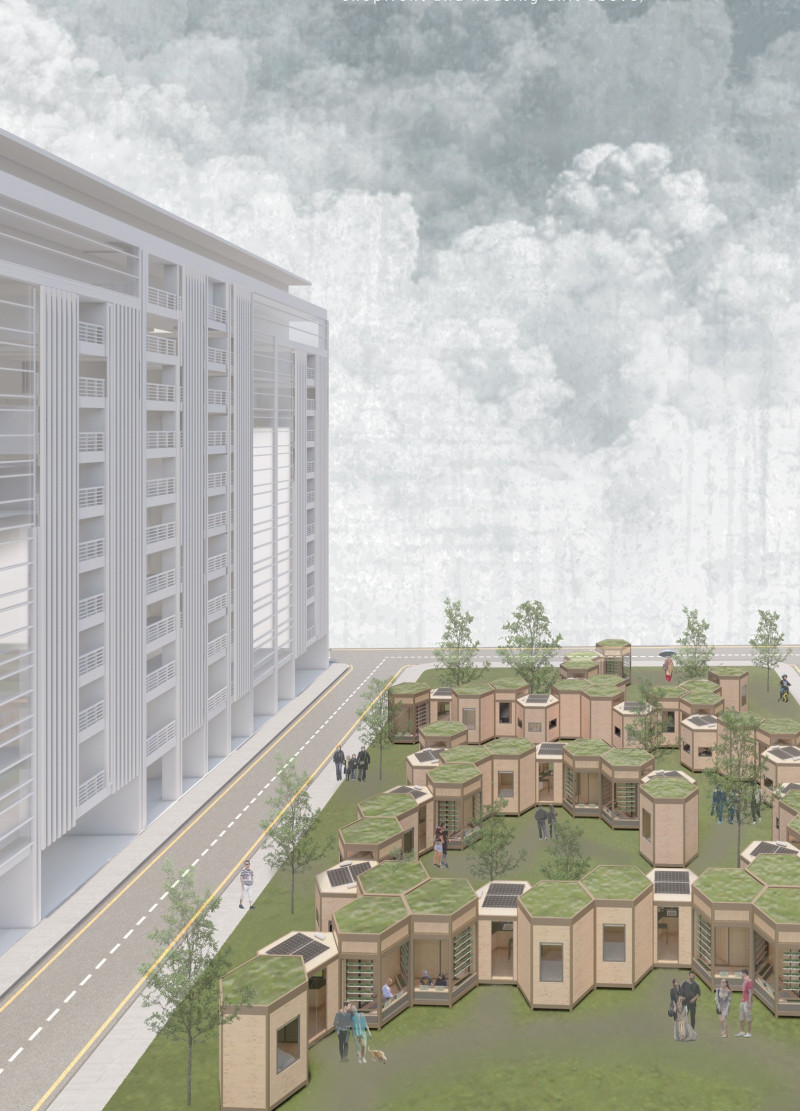5 key facts about this project
Hyf is a modular housing project located in Kuala Lumpur, Malaysia, designed to meet the challenges of high-density urban living. It provides affordable and community-focused housing options in an environment increasingly defined by towering buildings. The project takes its inspiration from the hexagonal shape of honeycombs, which symbolizes efficiency and community connection. This design emphasizes organization and interaction among residents.
Concept and Geometry
The design features a linear-hexagonal form that promotes links between housing units while adapting to various site conditions. This shape optimizes space usage and encourages social interactions among residents. The configuration allows for flexibility and scalability, which are essential in meeting different living needs in an urban setting.
Sustainable Features
Hyf includes a semi-outdoor working space surrounded by mesh that incorporates planters. This design allows residents to engage with greenery and interact with one another, enhancing their living experience. Inside, the spaces are organized to suit the daily routines of young professionals, ensuring a comfortable and functional environment that also looks appealing.
Materiality and Construction
Sustainability plays a key role in the choice of materials for Hyf. Timber framing is used for its strength and aesthetic charm, adding warmth to the housing units. The integration of a green roof not only provides insulation but also supports urban gardening and encourages biodiversity in the city.
Green Systems
Rainwater harvesting systems and photovoltaic energy installations are also part of the design, supporting off-grid living. These elements work together to lower the environmental impact of residents and underscore the commitment to sustainable living practices. Their inclusion enhances the structure's practicality while addressing broader ecological concerns.
The arrangement of planter-cladded mesh introduces a unique visual aspect, allowing nature to play a role in everyday life. It creates interactions between private and shared spaces, bridging gaps in community living.


















































